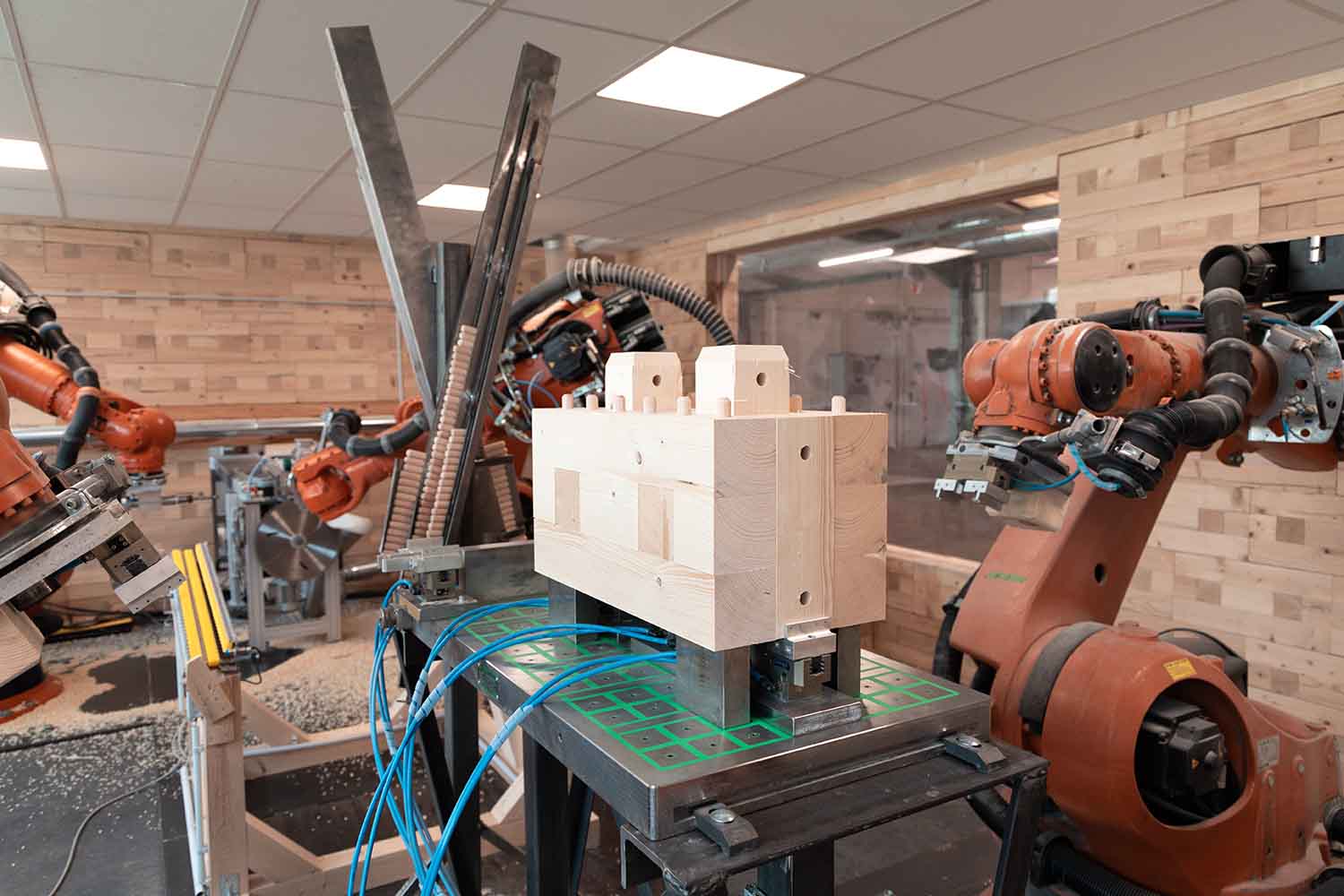Stuttgart-based start-up Triqbriq has developed a fully automated process to produce modular wooden building blocks. These blocks, or “Briqs”, are made from waste wood or damaged recycled wood before being assembled into buildings. This means that not only are houses built using the materials far easier on the environment, but they also bind significant amounts of CO2 within their walls. Could this two-pronged approach make a sustainable dent in our concrete jungles?
How exactly are new houses made from old wood?
Many experts see wood as an important key to a successful building revolution. Wood not only has the necessary load-bearing capacity for building houses, but also has the ability to bind CO2 for many years and, if used correctly, can be completely deconstructed without causing further pollution. The project is already in motion. A residential building in Frankfurt made from Triqbriq building blocks hopes to bind more than 50,000 kilograms of CO2 over the course of its life. Wood’s natural heat and sound-insulating properties are also huge potential benefits to residents, and the wood is treated to make sure it is resistant to fire.
Triqbriq produces modular components consisting of several individual parts, which the company joins together using axes and wooden dowels. The individual components hold together without any glue or adhesives and support each other, making the buildings strong and able to be built upon in the future.
It is this production process that enables Triqbriq to use reclaimed wood as well as new wood. So-called calamity wood, wood that’s useable despite being dry, infested or damaged, is actually less suitable for house construction as it is too unstable. Thanks to the tri-axial structure, however, Triqbriq is able to process even weakened wood or reclaimed timber into robust bricks. Among others, the company works together with Concular, a company that specialises in the circular deconstruction of buildings. Concular supplies Triqbriq with timber beams already in use from demolished buildings. And, although there are milling holes and other damage, the wood remains suitable for use in the “Briqs”.
The production process for the individual Briqs is fully automated using robots. They saw wooden beams to the required dimensions, mill the dowel holes and then even assemble the Briqs. As Lewin Fricke, Head of Public Relations at Triqbriq, reveals in the video above, the robot-based production module can be connected to sawmills or other infrastructure.
Assembly without glue and in record time
What’s more, tradespeople don’t need any specialised training to work with the Briqs. The modules are delivered on pallets and then simply need to be slotted together. As Triqbriq does not use glues or adhesives, there are no drying times or other waiting times during house construction. The company also promises a significant speed advantage compared to building with sand-lime bricks.
The fact that the individual Briqs hold together without any glue also means that they can be dismantled without leaving any residue. Theoretically, a house made from Briqs could be dismantled in 50 years and rebuilt elsewhere or in a different form. With our changing climate, they could provide a vital solution for homes built in areas affected by changing or extreme weather conditions.
But, should we be building houses from calamity wood?
However, one point of criticism of Triqbriq’s tree modules is the removal of calamitous wood from ecosystems. Damaged and dead wood fulfil important functions in forests and creates habitats for insects, for example. Triqbriq rebuted this critique, however, by claiming that there is already a surplus of calamitous wood in forests.
Experts such as German forestry office manager Klaus Velbecker also emphasise the importance of removing damaged timber from forests. Increasing heat in the summer months is one such example. On the other hand, the removal of dead wood inhibits the spread of the bark beetle, which is becoming more and more of a pest in forests and urban environments. Using calamity wood sensibly could therefore also present an opportunity to protect the health of our forests in the face of increasing global warming.
Overall, Triqbriq’s modular building blocks offer great opportunities to make sustainable construction easier. However, in order for timber construction to realise its true potential, more multi-family houses need to be built in the long term. Triqbriq has already completed its first multi-storey shell in Frankfurt, but this is a single-family house. Lewin Fricke told us that Triqbriq is involved in the planning of several apartment blocks. Next spring, however, the next milestone will be the construction of a supermarket.
The post Giant Lego Made From Damaged Wood: How Triqbriq Could Revolutionise Timber Construction appeared first on Digital for Good | RESET.ORG.


